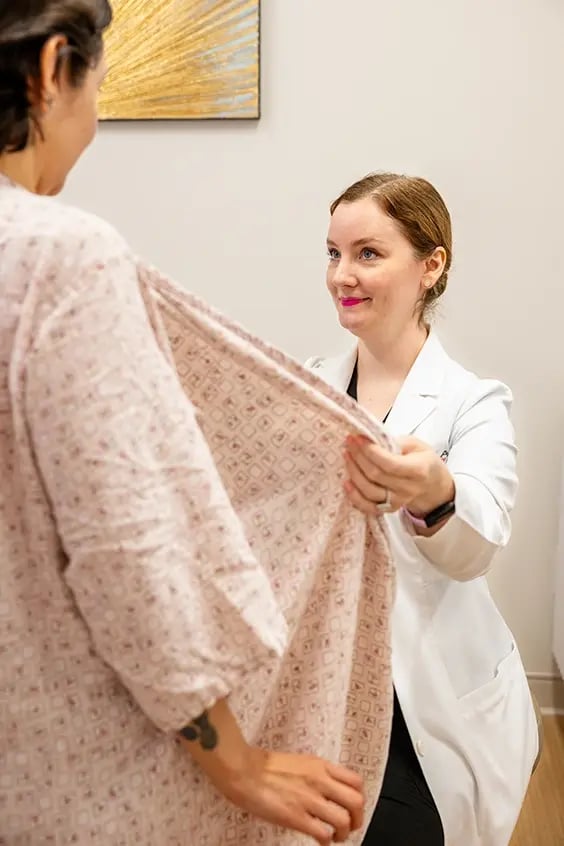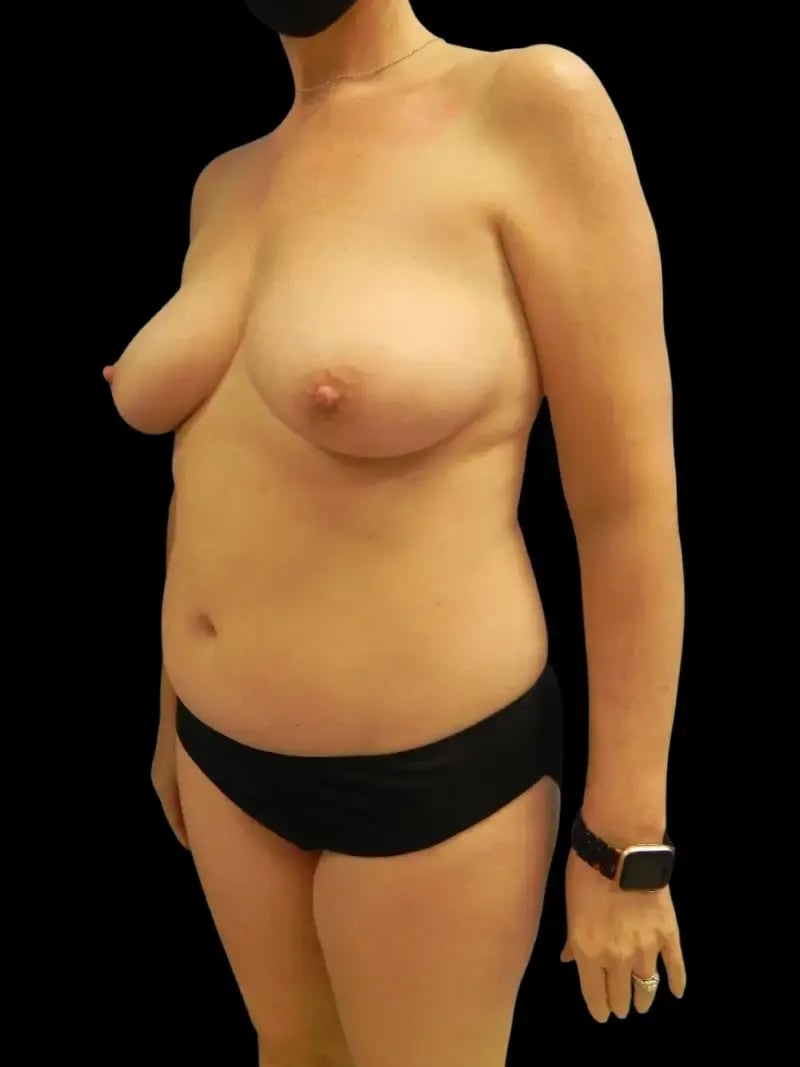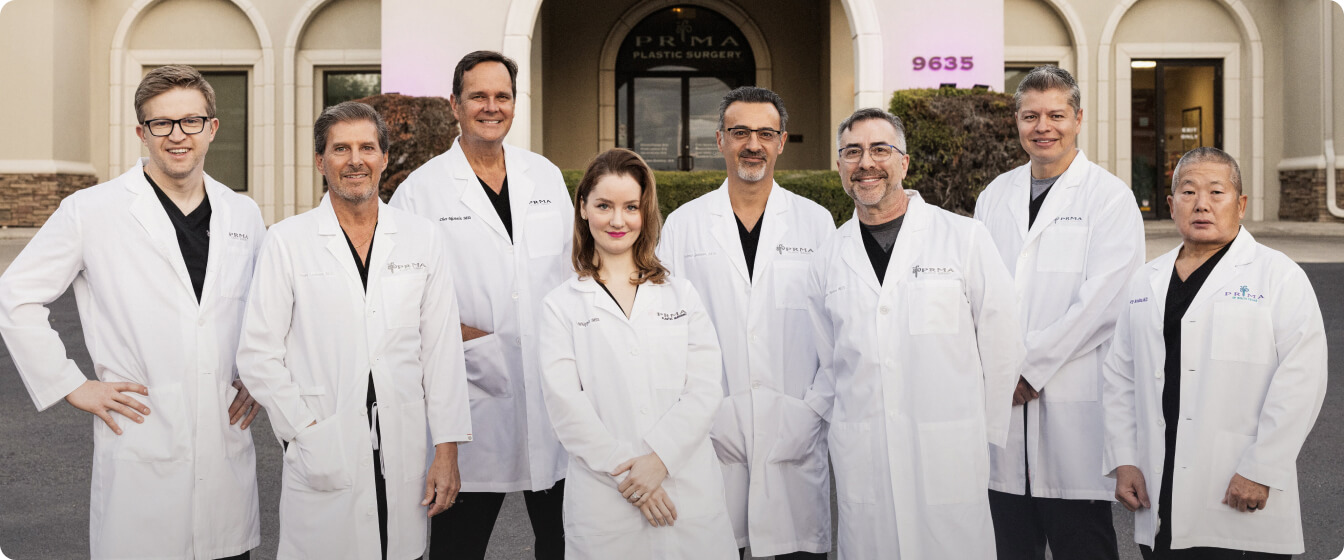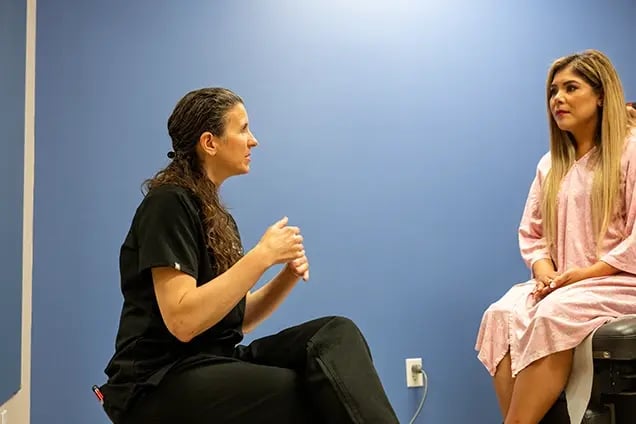
Implant Reconstruction Failure
What is Implant Reconstruction Failure?
Many women choose to get implants following mastectomy, but for some, they don’t offer the lasting solution they were hoping for.
Over time, implants can fail—physically, medically, or aesthetically. Whether it's due to rupture, chronic discomfort, asymmetry, or simply not feeling “like yourself,” a failed breast reconstruction is more common than most patients are told.
Fortunately, through advanced microsurgical procedures like DIEP flap reconstruction, we replace implants with natural tissue from the patient’s own body, providing a safer, more permanent, and more natural-feeling result.
Key Information
Symptoms may develop gradually and often require surgical correction.
Implants are not permanent—most will need to be replaced or removed over time.
Corrective options include implant exchange, removal, or conversion to natural tissue-based reconstruction.
Natural tissue reconstruction offers a more permanent, natural-feeling solution with fewer long-term risks.
All flap surgeries at PRMA are performed by two microsurgeons for greater safety and precision.
Sensation can often be restored with
TruSense® technology during natural tissue reconstruction.
What to Expect During Surgery
Your surgical experience to correct a breast implant failure will vary based on the corrective path you choose.
For implant removal or implant exchange, surgery is typically shorter and may be performed as an outpatient procedure. Recovery tends to be quicker, though outcomes may still involve future revisions.
For patients choosing natural tissue reconstruction, the procedure is more complex but offers lasting, natural results. These surgeries take longer and involve a short hospital stay, but recovery is carefully managed through Enhanced Recovery After Surgery (ERAS) protocols to minimize discomfort and speed healing.

Before & After








Recovery Timeline
-
Week 1:Rest is essential during the first week following a breast implant failure procedure. You’ll likely experience swelling, bruising, and soreness around the surgical area. If you have implant removal or exchange, you may go home the same day. For natural tissue reconstruction, expect a 2–3 day hospital stay to monitor healing and manage pain.
-
Week 2:Your energy will improve by the second week, though you’ll still need to take it easy. Depending on your progress, drains may still be present but could be removed soon. Incisions are healing, and any discomfort should be managed with less medication.
-
Week 3-4:By the third and fourth week, swelling and tightness typically start to ease, and many patients begin to feel more like themselves. If you work a desk job, you may be ready to return. Donor site healing continues if you had flap surgery, but you’ll still avoid heavy lifting or exercise.
-
Week 5-6:At this stage, most patients are moving more comfortably and can begin easing into low-impact activities with clearance from their surgeon. Incisions continue to mature, and for patients who underwent TruSense® nerve reconstruction, early signs of returning sensation may begin to emerge.


The Nation’s Destination for
Sensation Restoration
Am I a Candidate for Breast Implant Failure Correction?
You may be a strong candidate for implant failure correction, in general, if you:
- Have experienced complications such as implant rupture, capsular contracture, chronic pain, or infection
- Are dissatisfied with the look, feel, or long-term results of your implants
- Have sufficient donor tissue (e.g., abdomen, thighs) if considering natural tissue reconstruction
- Are in generally good health and able to undergo surgery
- Are seeking a more permanent, natural-feeling solution without future implant-related risks
- Are emotionally ready to move forward with a corrective procedure
Find Your Surgeon
Will Insurance Cover Breast Implant Failure?
Under the Women’s Health and Cancer Rights Act (WHCRA), group health plans and insurance providers that cover mastectomies are also required to cover breast reconstruction, including procedures to correct complications from implants such as rupture, capsular contracture, or other medically necessary revisions.
At PRMA, our team works closely with patients and insurance providers to ensure coverage is verified and benefits are maximized.
For more information, visit [Insurance FAQs] in the patient resource center.

Preparing for Surgery
Learn more about:




